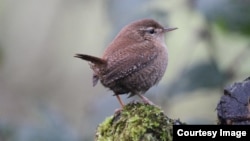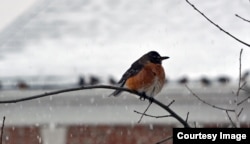Scientists in Britain have published an important new list of the winners and losers of the bird populations as they fight to adapt to climate change.
Winners include the common wren in England and the U.S. robin.
The new findings were released Thursday by researchers from Durham University in collaboration with the United States Geological Survey (USGS).
The researchers took a long list of European and American birds and split them into two groups. One group was expected to adapt well to changes. The other group, not so much.
They used 30 years of climate records and then watched what happened to these bird populations over time.
What they found out was the birds expected to thrive in a changing world did quite well.
Location, location, location
In many cases their numbers declined slightly in one region but skyrocketed in another as the climate changed in the birds' favor.
In Europe, birds like the wren have moved north as the weather gets less harsh, while its numbers dropped in the South as it gets hotter and drier.
It was the same for the American robin. Its numbers dropped in the South while more and more of the red-breasted birds showed up in the north-central parts of the country.
The losers tend to be species that favor northern climates, like the willow tit, and the brambling in England which has declined by as much as 80 percent.
There were similar results in the U.S. where the researchers noted declines in the numbers of the Canada Warbler and white-throated sparrow, both northern birds.
"This helps us to understand where climate change is affecting populations and to understand the causes of population changes of common birds," said Dr. Stephen Willis, one of the authors."
It also helps scientists figure out where changes are happening and possibly ways to help mitigate the effects of a rapidly changing environment.
"Such indicators are an important guide to the scale of the impacts of global climate change on the natural world and a check on whether government policies are making a difference," said Dr. Richard Gregory of the Royal Society for the Protection of Birds who collaborated on the article.
What Does it All Mean?
This study arms scientists with another tool in their efforts to predict the effects of climate change and plan for them.
And the authors point out this research could be done for other at-risk species.
"The same approach could also be applied to species such as bees, butterflies and dragonflies which are well monitored and highly susceptible to changes in climate," said Willis.
The research was published in Thursday's journal Science.










